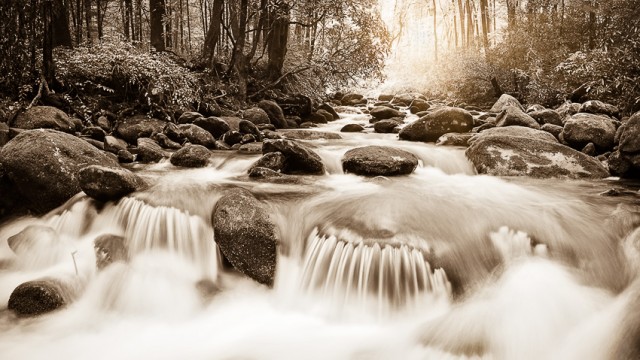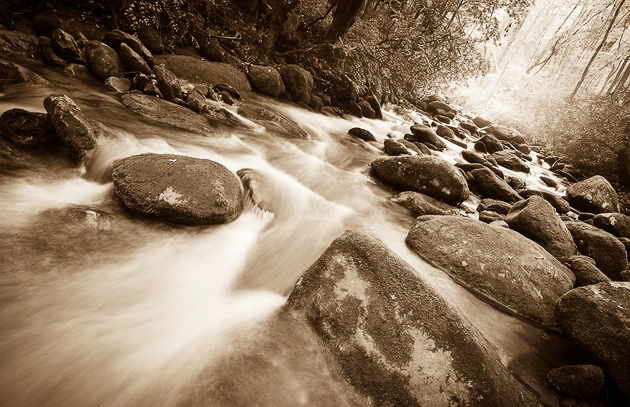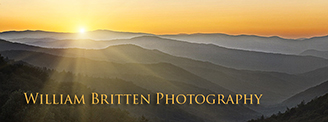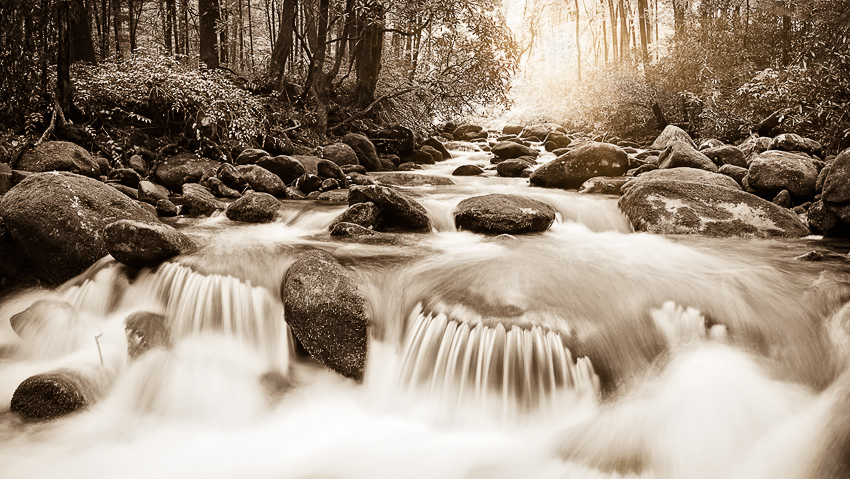
Lately I’ve become hooked on black and white conversions. A couple of weeks ago I posted some black and white Smoky Mountains photos from Cades Cove. Today’s offerings are from along the Roaring Fork.
In the digital era the camera’s sensor records everything in color. Unlike the monochromatic film of yore, you must start with a color image and then do a conversion. But the basics of black and white photography have not changed. Not every scene lends itself to a monochrome presentation. All you have to work with are shades of gray and dark and light. It’s all about contrasts in the areas of light. I think that photos of creeks are good candidates, especially the boulder-strewn Roaring Fork. The natural colors here are mostly whites of the water and grays of the rocks, so you have a lot of neutral shades to work with. Add some dramatic lighting, and you might just have a great black and white photo. The photos on this page were converted using Lightroom, including the addition of a sepia tone that gives each image a warm coloring.
Recently I’ve added some black and white panoramas to my gallery of Smoky Mountains photos. These, and all of my Smokies landscapes are on display at the William Britten Gallery along the historic Arts and Crafts Trail on Glades Rd. in Gatlinburg.


